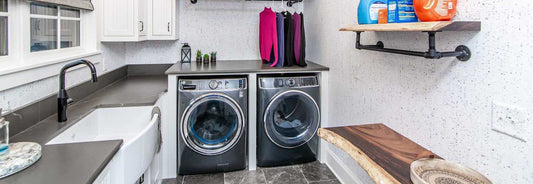Environmental Analysis and Humidity Control
When it comes to optimizing warehouse operations, a comprehensive analysis of the environment is indispensable. The interplay between temperature and moisture levels significantly influences various facets of warehouse management. From the preservation of goods to the well-being of your workforce, understanding the dynamics of humidity is the key to solving the problem.
The Link Between Humidity and Product Integrity
Ensuring the longevity and pristine condition of stored goods isn't merely a logistical concern—it's a humidity matter. Controlling humidity safeguards the very essence of the products housed within warehouses. Why is that important? Fluctuating humidity levels can contribute to the degradation of materials, whether it be electronics, textiles, or perishable items.
When humidity isn't kept in check, it accelerates the wear and tear on products. Excessive moisture can seep into packaging, leading to mold growth or, in extreme cases, irreversible damage. Conversely, overly dry conditions pose a separate threat, causing materials to become brittle and prone to breakage.
There are also financial implications. Goods with compromised integrity not only erode profit margins but also tarnish a business's reputation. The importance of maintaining the delicate balance of humidity becomes glaringly evident when we realize that this control isn't just about preserving goods; it's a commitment to delivering quality and reliability.

Consequences of Poor Humidity Control
Inconsistent humidity levels provide a breeding ground for mold and mildew, stealthily compromising the quality of products. This not only leads to product losses but also necessitates additional costs for cleaning and potential recalls. Imagine the financial strain of having to dispose of batches of goods due to preventable damage.
Operational disruptions form another layer of the predicament. Excessive humidity can corrode machinery and equipment, reducing their lifespan and requiring frequent repairs. On the flip side, overly dry conditions may lead to static electricity, risking damage to sensitive electronics and disrupting the smooth flow of operations.
The financial toll of these issues is also apparent. Repair and replacement costs, coupled with potential downtime during corrective measures, can accumulate swiftly. A warehouse that neglects humidity control unwittingly invites a host of challenges that not only deplete financial resources but also threaten the very core of seamless operations.
What can be done to lessen the negative impact and promote more quality experiences?
Mastering the Balance: Practical Solutions for Optimal Humidity
Achieving the delicate equilibrium of optimal humidity in warehouses demands a strategic approach. Fortunately, an arsenal of proven technologies and methods exists to empower businesses in their quest for climate control excellence.
Smart Ventilation Solutions
Humidity control begins with robust ventilation systems and the application of environmental controls. Implementing well-designed ventilation not only regulates airflow but also assists in moisture management.













